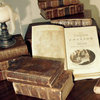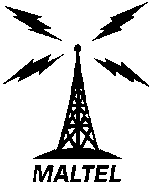Olivey Library: Difference between revisions
AndyMatthews (talk | contribs) No edit summary |
AndyMatthews (talk | contribs) No edit summary |
||
| Line 14: | Line 14: | ||
SW_location=[[Kitting Alley]]|SW_color=Street | SW_location=[[Kitting Alley]]|SW_color=Street | ||
}} | }} | ||
{{CoL}}{{free info}} | |||
[[Image:Maltel.gif|150px|left|MalTel Logo]] | [[Image:Maltel.gif|150px|left|MalTel Logo]] | ||
''"You are standing outside '''Olivey Library''', a derelict grey-stone building with black crosses painted across its doors."'' | ''"You are standing outside '''Olivey Library''', a derelict grey-stone building with black crosses painted across its doors."'' | ||
Revision as of 04:01, 10 October 2024
| Olivey Library |
| Olivey Library
Barrville [45,44]
Basic Info:
|
 |
Center Of Learning |
| This location qualifies as a Center of Learning & is considered a neutral zone for all the supporters of this policy. According to the policy, libraries, schools, zoos, and museums in the city of Malton are considered safe places. No survivor in one of these locations may be killed for any reason unless that survivor is a specified enemy. |
 |
Free Information |
| Libraries are for everyone and should remain barricade free. |
"You are standing outside Olivey Library, a derelict grey-stone building with black crosses painted across its doors."
The Olivey Library is located at [45,44] in the suburb of Barrville. It, along with the rest of the suburb, has been in the hands of The Ridleybank Resistance Front as long as local survivor groups can remember. The library is the location of the mobile phone mast for the suburb, and also the headquarters of the secret bibliophile organization Read or Die.
- Dont forget to check out the Building Information Center for Barrville.
History
Originally constructed in 1916 & 1917, Olivey Library was the pet project of Hugh Pengelly Olivey, a retired surgeon and amateur historian from South West England. Olivey privately put up nearly $250,000 to fund the construction of the facility, which he donated to the town of Malton when it was completed, along with some 200 volumes from his personal library to get it started. The source of the money for the building's construction still remains something of a mystery to this day, as Olivey was a man of very modest means after his retirement. Many dramatic conspiracy theories have been proposed by media sources to explain the origin of the cash, including the suggestion that he may have been linked to the Holy Grail conspiracy featured in Dan Brown's popular novel "The Da Vinci Code".
Regardless of its original funding, over the next 70 years Olivey Library grew steadily, requiring 4 major renovations, and by 1990 it was the main reference and lending library in the city of Malton. It alone housed some 80,000 titles not including half a century of reference materials, and kept track of at least 40,000 additional copies stored at the dozens of branch libraries peppered across the city. Its central location in Barrville made it the perfect location for Maltonians from all corners of the city who needed to use its exclusive central resources, as well as an ideal distribution point for books and other materials requested by the branch libraries.
Unfortunately, when the fighting began during the early outbreaks in the summer of 2005, combat started taking place inside the building, resulting in large numbers of the library's catalog being destroyed by fires, unrepairable plumbing leaks, physical wear from being walked on and used as barricading materials, and general exposure to the elements. Many of its materials, along with those of the branch libraries, have been scattered across the city to be used as fuel and barricades. Recent reports from Barrville indicate that the building is in ruins and fewer than 1000 volumes remain there.

|
Needs Generator |
| This building requires a generator for maximum usefulness. |
| This page, Olivey Library, is a locations stub. Please help us to improve the wiki by contributing to this page. Be sure the following information is added to the page: coordinates, suburb, 9 block map (or 16 block map for large buildings), description, barricading policy, and history. Please refer to the Location Style Guide. |
